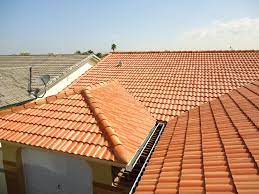With the increasing demand for renewable energy sources, solar energy has become one of the most popular alternatives. As a result, the price of solar panels has dropped over the past few years, and more people are eager to switch to solar energy. However, deciding to install solar panels is not as simple as it may seem. One of the most critical factors in this decision-making process is the price-performance ratio of the solar panels. In this article, we will take a closer look at what this ratio entails and how you can evaluate it for your solar panels.
1. Understanding the Price-Performance Ratio
The price-performance ratio is a simple calculation that divides the cost of the price solar cells (pris solceller) system by its expected performance or output. In other words, it is a measure that shows how much bang for your buck you’re getting. The cost of the solar panel system comprises equipment, installation, and necessary permits. Meanwhile, the performance of the system is usually measured in watts (W). You can find this information on the specification sheet of the panels. By comparing the cost to the performance, you can determine whether a solar panel system is worth installing or not.
2. Factors affecting the Price-Performance Ratio
There are several factors that can impact the price-performance ratio of a solar panel system, such as:
i. Panel Efficiency: Highly efficient panels may be more expensive, but they generate more power per square foot, making it possible to use fewer of them.
ii. Installation Costs: The cost of installation may vary depending on how difficult it is to install the panels and where the panels are located.
iii. Brand: Brand reputation may affect the price-performance ratio. High-end brands may cost more, but they may also provide better quality and long-term performance.
iv. Maintenance/Repair Costs: Make sure to consider the cost of maintenance, repair, and replacement of the solar panels when calculating the price-performance ratio.
3. Evaluating the Price-Performance Ratio
To evaluate the price-performance ratio, you need to know the overall cost of the system and how much power you can expect the system to produce. You should also compare different solar panels from various brands to determine which ones would be the most cost-effective. Ultimately, it will depend on your budget and energy needs.
4. Additional Considerations
Apart from the price-performance ratio, there are several additional considerations that you should keep in mind before installing solar panels. These include:
i. Location: The amount of sunlight and temperature in your area can impact the performance of your solar panels.
ii. Rebates and Incentives: Check with your local utility company, state, or federal government for rebates and incentives that you may be eligible for.
iii. Financing Options: Solar panels can be expensive, but there are different financing options available, such as loans, leases, and power purchase agreements.
5. Conclusion:
Evaluating the price-performance ratio of solar panels can help you make an informed decision about the feasibility of installing solar panels on your property. Keep in mind that there are numerous factors that can impact the price-performance ratio, including panel efficiency, installation costs, brand reputation, and maintenance/repair costs. Ultimately, it will depend on your budget and energy needs. By considering all of these factors, you can determine whether solar panels are worth the investment for you and your family.



